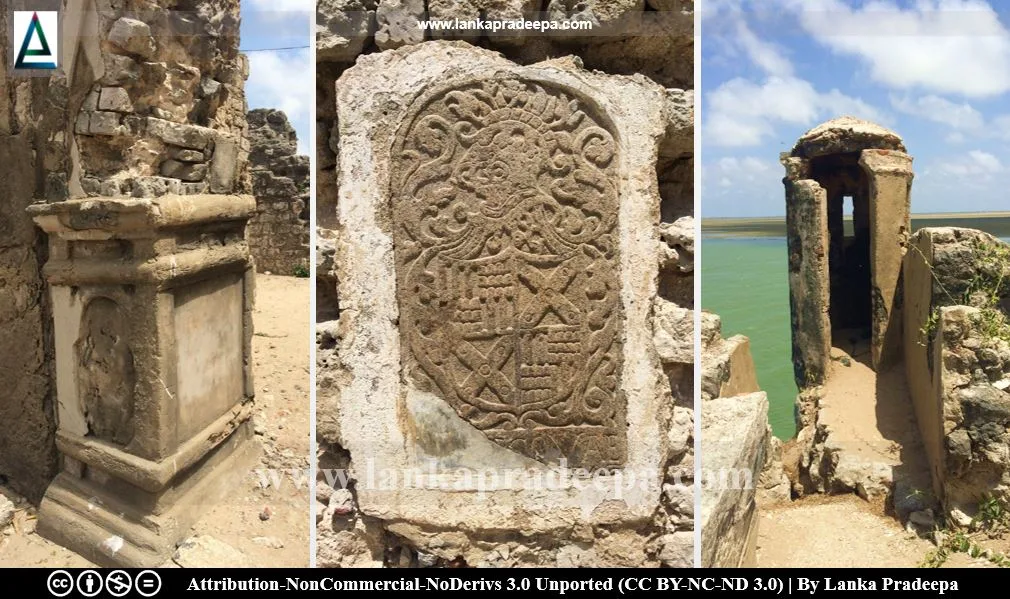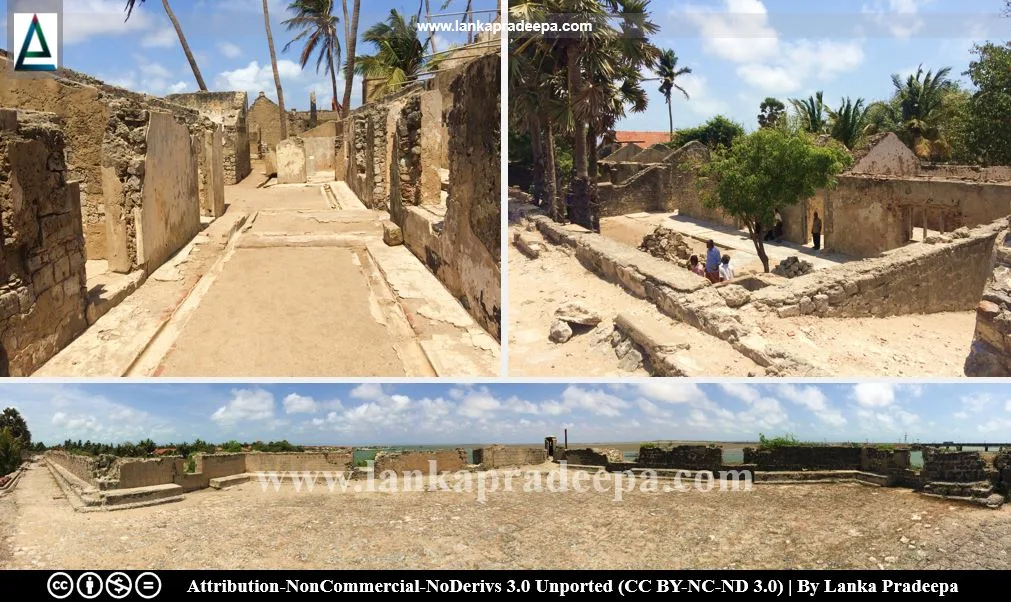
Mannar Fort (Sinhala: මන්නාරම් බලකොටුව; Tamil: மன்னார்க் கோட்டை) is an ancient fort located on the island of Mannar, Sri Lanka.
History
The fort was built on Mannar Island soon after it was taken by the Portuguese viceroy, Don Constantino de Braganza about the year 1560 (Abeyasinghe, 1995). It surrendered to the Dutch on 22 February 1658 and they rebuilt the fort in 1696 (Mandawala, 2012). On 5 October 1795, the British occupied the fort when the Dutch surrendered to them (Mandawala, 2012).
A description of the Mannar Fort is found in the section related to Sri Lanka in Antonio Bocarro's seventeenth-century work entitled, "O Livro das plantas de Todas as Fortalezas, Cidadese Povoacoes do Estado da India Oriental" (Abeyasinghe, 1995).
The fort
The square-shaped fort is located on the eastern tip of the island shore next to the main bridge that connects the mainland with the Mannar Island.
There are remains of many buildings and structures inside the fort. Of them, the church building, the court and other structures including the bastions have been identified today (Asanga & Nishantha, 2018). The church, without a roof, contains a large number of tombstones ranging from the 17th century to the 20th century (Asanga & Nishantha, 2018). Although the fort was first built by the Portuguese, the remaining buildings and structures show architectural features belonging to the Dutch (Asanga & Nishantha, 2018).
The walls of every structure of the fort have been constructed using limestone, coral and bricks [(less amount) Asanga & Nishantha, 2018]. The main entrance arch was set at the southern wall of the fort but it is completely destroyed today. An illustration of that entrance arch is found in a painting of Mannar Fort drawn in 1710 (Asanga & Nishantha, 2018).
Four bastions, still in good condition, have been positioned at the four corners of the fort and three of them have guard posts (Asanga & Nishantha, 2018). To position the guns of the guards, a wall of about 1 meter high has been built on the slope of the southern wall (Asanga & Nishantha, 2018). The wall originally had about 45 windows but due to the collapse of the entrance arch, 12 of them are not found today (Asanga & Nishantha, 2018).
A protected site
The Dutch Fort and the rampart situated in the
Divisional Secretary’s Division, Mannar are archaeological protected monuments, declared by a government gazette notification published on 11 April 1974.


 .
.
References
1) Abeyasinghe, T.B.H., 1995. Antonio Bocarro's Description of Ceylon Translated into English. Journal of the Royal Asiatic Society of Sri Lanka, 39, pp.1-9,64.
2) Asanga, M. V. G. K.; Nishantha, I. P. S., 2018. Mannarama Distrikkaya (In Sinhala). Department of Archaeology (Sri Lanka). ISBN: 978-955-7457-10-9. pp.61-65.
3) Mandawala, P.B., 2012. Sri Lanka: Defending the military heritage; legal, administrative and financial challenges. Defending the military heritage; legal, financial and administrative issues. Reports from the Seminar 16 – 17 May, 2011, in Karlskrona, Sweden, organised by ICOMOS International Scientific Committee for Legal, Financial and Administrative Issues (ICLAFI) and the Swedish Fortifications Agency of Sweden. p.102.
4) The Gazette of the Democratic Socialist Republic of Sri Lanka; Extraordinary. No: 4-258. 11 April 1974.
2) Asanga, M. V. G. K.; Nishantha, I. P. S., 2018. Mannarama Distrikkaya (In Sinhala). Department of Archaeology (Sri Lanka). ISBN: 978-955-7457-10-9. pp.61-65.
3) Mandawala, P.B., 2012. Sri Lanka: Defending the military heritage; legal, administrative and financial challenges. Defending the military heritage; legal, financial and administrative issues. Reports from the Seminar 16 – 17 May, 2011, in Karlskrona, Sweden, organised by ICOMOS International Scientific Committee for Legal, Financial and Administrative Issues (ICLAFI) and the Swedish Fortifications Agency of Sweden. p.102.
4) The Gazette of the Democratic Socialist Republic of Sri Lanka; Extraordinary. No: 4-258. 11 April 1974.
Explore Other Nearby Attractions
Location Map (Google)
This page was last updated on 26 June 2022

